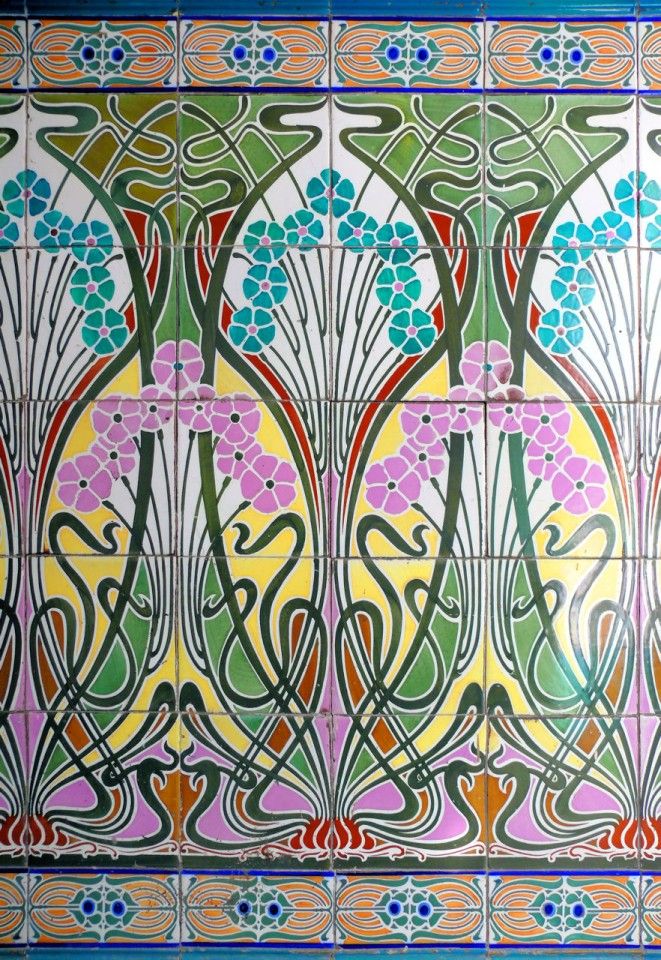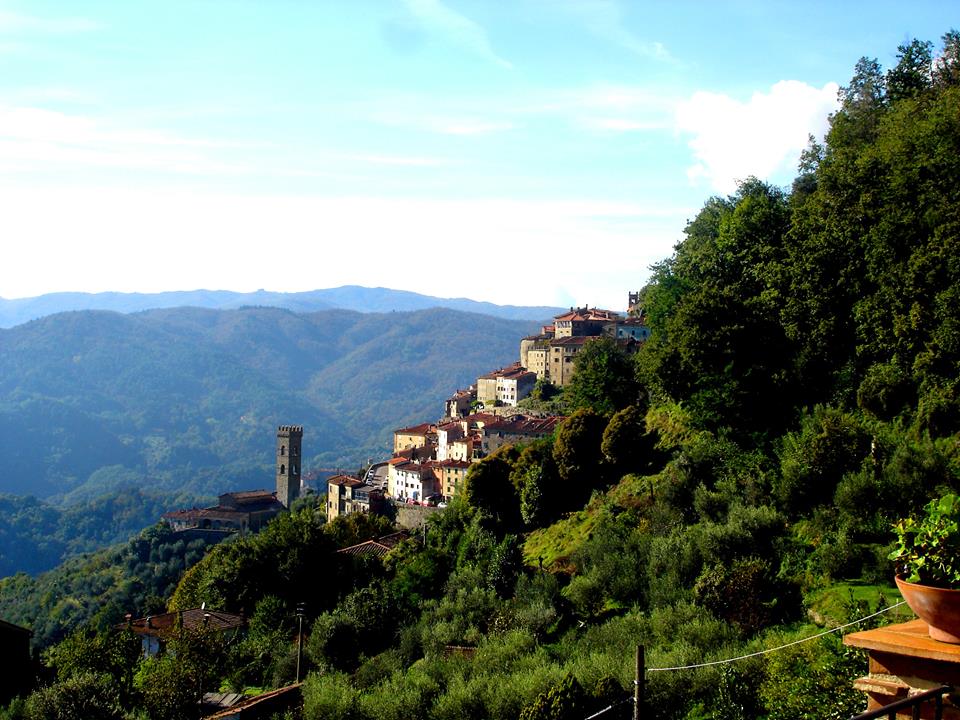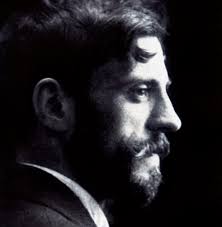
Visit Our Holiday Rental @: www.tuscanyholidays-casaverde.com
At the great Paris exhibition of 1900, a new art movement that had blossomed in Europe over the preceding years reached fruition. It produced a unique and magnificent form of painting, architecture and, above all, a modernist form of design that spread across the continent known as Art Nouveau or Liberty. It was art and design of a style that was greatly influential the later part of the 19th century and early part of the 20th.
Its inspiration from the earlier arts and crafts movement associated with William Morris and Burne-Jones , that stressed Art, Design and Architecture as a holistic enterprise in the naturalistic construction of the environment. The names of Henri Toulouse-Lautrec, Aubrey Beardsley and Gustav Klimt are perhaps familiar to us as well during this period.
In Tuscany, an artist perhaps less well known within the genre, but was highly influential on the local landscape of Tuscany. Is the artist Galileo Chini, sometimes thought of as the Italian Klimt.
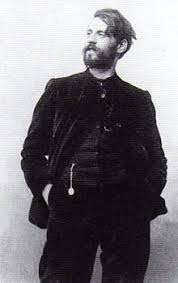
Galileo Chini was born in Florence to Elio, a tailor and Aristea Bastiani in 1873. After his father’s death, he enrolled at the Santa Croce School of Art, in Florence, where he attended the courses in decoration.
From 1895 to 1897 he occasionally attended the Free School of the Nude at the Academy of Fine Arts in Florence without obtaining any diploma, and always considering himself at the peak of his education he was otherwise self-taught. In this same period he met the young Elvira Pescetti who became his wife.
In 1899 he married Elvira. The first child, Isotta, was born in 1900 and a second son, Eros, in 1901.
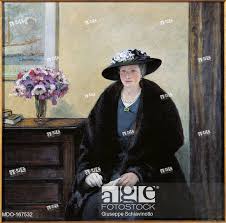
He developed a specific interest in the design and manufacture of ceramics, firstly from 1896 at the Arte della ceramica” in Florence; and later, together with his cousin Chino, he founded the “Fornaci di San Lorenzo” in Mugello, at Borgo San Lorenzo, a small town north of Florence. They made ceramics and stained-glass windows but also interior furnishings and design of wooden furniture decorated with tiles, ceramics and glass.
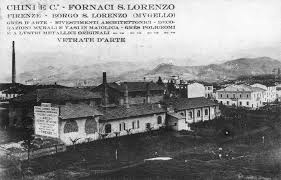
Fornaci di San Lorenzo
He continued to exhibit on multiple occasions, both in Italy and abroad. Until 1905 he engaged in a series of decorations and restorations in the church of Santa Maria Maggiore in Florence , as well as in a series of frescoes at the Hotel Cavour, Florence and at the Grand Hotel La Pace in Montecatini Terme Tuscany .
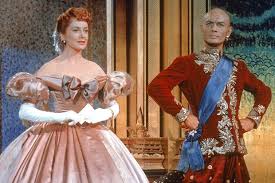
In 1910 King Chulalongkorn of Siam , Rama V , the son of Rama the IV who was the king in the film The King & I sent Carlo Allegri, then chief engineer at the Ministry of Public Works of Siam, to Italy, with the task of finding a painter for the new Palazzo del Trono in Bangkok. Signed the contract in Florence in 1910 between Galileo Chini and Carlo Allegri, in 1911 the artist embarked in Genoa, on the NDL Derfflinger steamship setting sail for the Far East. Rama V, who died on October 23, 1910, was succeeded by his son, the very cultivated King Vajiravudh, Rama VI . Chini frescoed the throne room at the new Ananta Samakhom palace and painted a series of portraits of Rama VI. He returned from the kingdom of Siam (today Thailand) in 1913 bringing back to Italy a series of landscape and environmental works, which he exhibited in 1914 at the Roman Secession Exhibition .
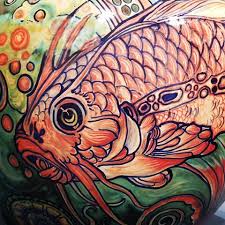
He also reported a collection of oriental memorabilia that he donated to the Ethnographic Museum of the University of Florence in 1950 . The influence of Indo-chinese art is abundantly clear in much of his work from this point.
In 1915 he taught at the Ornato Course of the Royal Academy of Fine Arts in Florence .
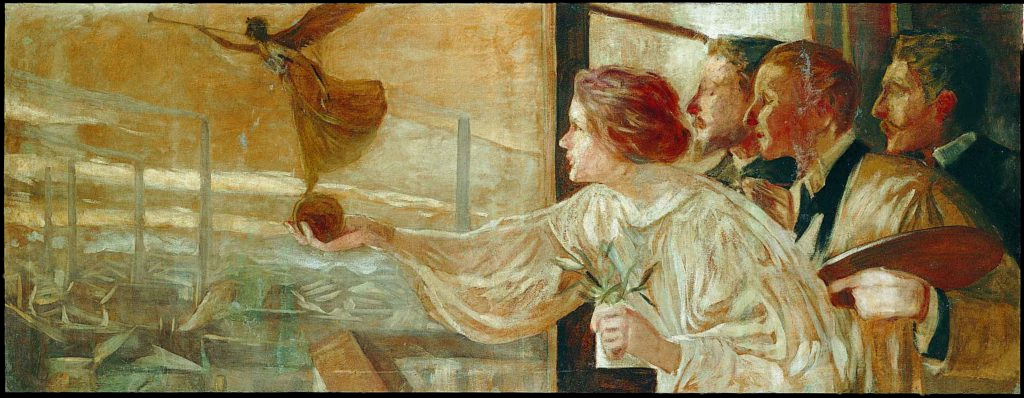
Meanwhile he diversified his artistic directions with his contemporary
Giacomo Puccini as a set designer, collaborating with him on productions of Gianni Schicchi in 1919 and Turandot in 1926.
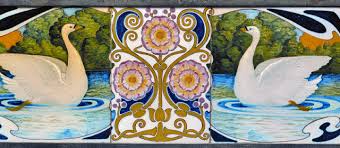
In 1920-1923 in Salsomaggiore Terme he completed the decoration of the Terme Berzieri and, later, in 1926, in the Grand Hôtel des Thèrmes , His collaboration with architects Gaetano Orzali in several Lucca villas, and
also with Alfredo Belluomini on many building and design projects along the Versilia coast in Viareggio and Lido di Camaiore.

Terme Berzieri in Salsomaggiore Terme
He spent so much of his spare time with his extended family in his villa at Lido di Camaiore and, as many a home movie demonstrated, he was thoroughly immersed and engaged with them as a fun loving family. Though later on he suffered the great loss of his daughter Isotta in 1946 and, in the following years, his artistic activities were progressively reduced due to serious sight problems that led him to blindness.
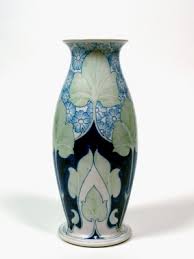
Galileo Chini died on August 23 1951 at his home-studio in via del Ghirlandaio 52, in Florence. He is buried in the monumental cemetery of the Antella .
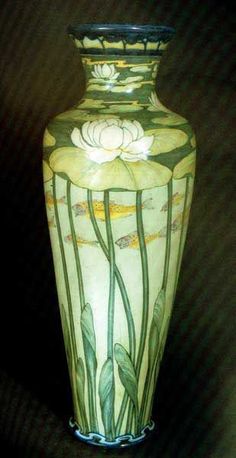
Where to see the influences and works of Chini
We visited an exhibition in April of works by Chini in Pontedera, a small town near Pisa. This was an extensive collection of paintings and ceramics, that illustrated the whole range of his independent artworks. There are some permanent pieces in the Uffizi and the Pitti palace in Florence. You can visit the website www.galileochini.it to view that range of his art works online. You can also register for access to the Chini archive.
The ceramics factory at Borgo San Lorenzo was destroyed by bombing in the Second World War. However, the most obvious and visible statements that can be seen in our region in main locations.
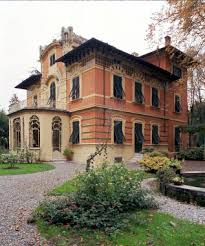
Lucca – there are a number of villas in the ‘Liberty’ style that were built in the early part of the 20th century outside of the walls of Lucca that demonstrate Chini’s collaboration with the architect and contemporary artist Gaetano Orzali. The two most interesting are the Villa Ducloz and the Villa del Magro.
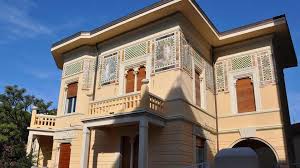
Viareggio & the Versilia Coast –
With Alfredo Belluomini, Chini created many of the buildings on this coastline, including the Grand Caffè Margherita, the fabulous Villa Argentina, the Balena bagno, the Caffè Concerto Eden. See link www.wishversilia.com/tour/art-deco-viareggio
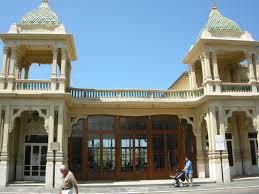
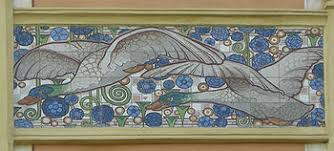
Lucca Villa del Magro Detail
Also in Lido di Camaiore is the house that Chini had built and spent many summer holidays with his family; the splendid Villa i Pini. Which since his death has become a hotel that you can stay in. See link www.clubipini.com
So in Tuscany there is a lot more art to see that is innovative, exciting and is not solely of the Renaissance.
